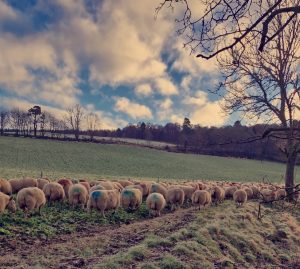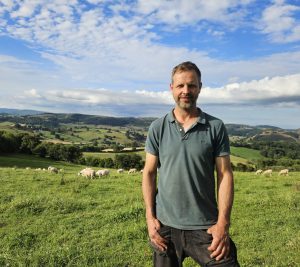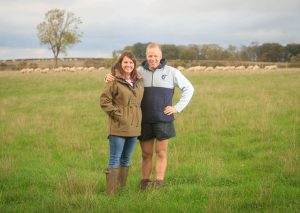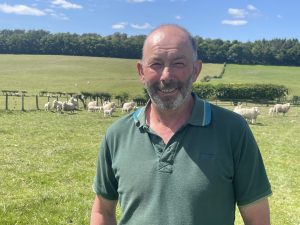with thanks to Ross Adam, farming with father, Ian; Newton of Haddo, Aberdeenshire
Time scarcity and the quest to make cost savings led farm contractor, Ross Adam to search for alternative genetics to introduce to the family’s traditional flock, and after initially successfully introducing the Aberblack meat sire, he’s since gone on to invest in the maternal Aberfield.
“Five seasons on and these genetics are living up to expectations, they’re easier to manage and fixed costs have subsequently been reduced while flock performance has improved along with income,” he explains. “Furthermore, since we’ve taken on more grazing, the Aberfield cross ewes are so easy to lamb, we’ve been able to double ewe numbers while retaining the same number of staff – me and Dad plus one casual.”
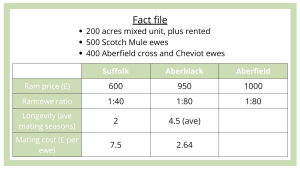
Ross says he was searching for genetics to come back home to that were guaranteed to be less labour intensive yet offered high performance from a forage-based diet. “I’d initially seen Innovis on Facebook and swapped our traditional Suffolk for an Aberblack tup to cross over our Scotch Mules; since the Aberblack has a narrower head and is finer boned, the lambs hit the ground without the intervention I was used to, they had that vigour and definitely reduced my management time at lambing which was a real bonus.
“While the first 10 days of lambing were intensive, the majority of the Scotch Mules had lambed within three weeks. They scanned an average 204%, and since we suffered a lot less losses at lambing it looks as though we’re on track to rear 188%.
“Last year we weaned at approximately 16 weeks and the majority of Aberblack cross lambs had reached 21kg to 22kg target deadweight three to four weeks later. They handled better and left a higher quality uniform lamb with the majority killing out in the R3L spec.
“We introduce the Aberblack in a one to 80 ewe ratio; previously we’d used Suffolk tups – one to 40 ewes, and then they may have lasted just one season, whereas we’re finding our Aberblacks have so far worked for up to four seasons and thrive off pure forage diets – grazed grass, silage and fodder beet. I’m dead against feeding rams concentrate. Also, with Innovis genetics I know I’m investing in proper recorded stock and there’s a ram to suit all sorts of systems including ours.”
Ross says Suffolks had been the staple terminal sire at Newton of Haddo for over a generation, however things had to change. “While I don’t dislike the breed and how the lambs perform, they require so much work just to get there – simply to lamb live and then get up and go was a challenge.”
There was no time to waste I wanted to start to build a flock for the future.
Having travelled to Australia and New Zealand, Ross arrived back home in 2020 and started a contracting business while making changes to the unit’s traditional outdoor lambing flock. “There was no time to waste I wanted to start to build a flock for the future.”
Having agreed to a new terminal sire, he began to focus on future damline genetics. “We initially introduced the Cheviot, and are continuing to use it alongside the Aberfield to create a smaller more efficient ewe maturing at 60kg to 70kg that’s easier to keep than a Scotch Mule and on a forage diet.
We tup the best Cheviot ewes and shearlings with the Aberfield for replacement purposes and so far so good with the hoggs scanning at 130%.
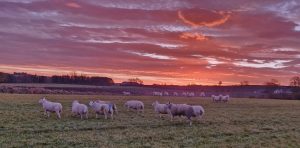
“I’d also visited Southfield, home to Innovis’s forage-based nucleus flock in the Borders; these sheep thrive in commercial conditions similar to ours, there’s a lot of selection pressure and I’m aware the company is continually developing new traits with an accompanying selection index.”
He adds: “A few seasons down the line and we’re getting there. Investing in Innovis genetics has enabled me to use EBVs to select for certain maternal traits to my advantage, keep one step ahead.”
